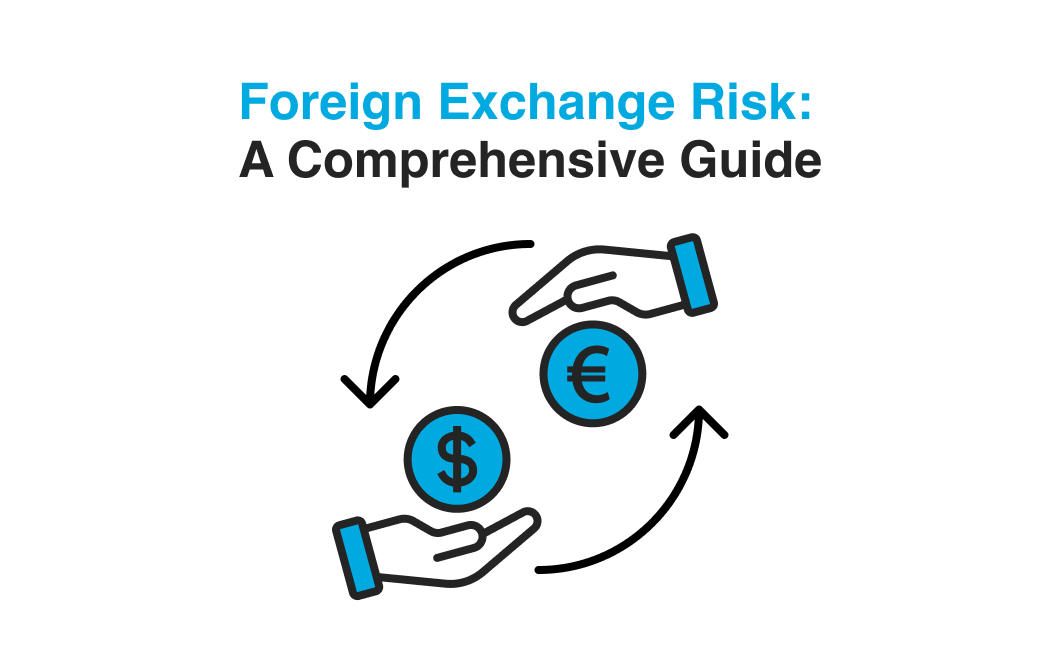Discover essential FX hedging strategies and currency management best practices from our foreign exchange experts.
Foreign Exchange Risk: A Comprehensive Guide
Foreign exchange risk, also known as currency risk or FX risk, refers to the potential for financial loss or gain resulting from fluctuations in exchange rates. This risk is particularly relevant to businesses engaged in international operations. Understanding and effectively managing foreign exchange risk is crucial for maintaining profitability, cash flow stability, and overall financial well-being. In this comprehensive guide, we will delve into the concept of foreign exchange risk, explore its various types, examine its causes, delve into measurement techniques, and provide strategies for effective risk management.
What is Foreign Exchange Risk?
Foreign exchange risk can be defined as the potential losses or gains due to changes in currency exchange rates. It arises from the volatility of global currency markets, where exchange rates fluctuate based on various factors such as supply and demand dynamics, economic indicators, political events, and market sentiment. Businesses that engage in international transactions, whether importing or exporting goods and services, are vulnerable to foreign exchange risk.
Importance of Foreign Exchange Risk Management
Foreign exchange risk management is crucial for several reasons. Firstly, it helps businesses and individuals mitigate potential financial losses caused by unfavourable currency movements. Secondly, effective risk management enhances cash flow predictability and facilitates better budgeting and financial planning. Lastly, by managing foreign currency risk, firms can maintain competitive pricing, improve profitability, and discover potential growth opportunities by embracing more currencies.
Types of Foreign Exchange Risk
Transaction Risk:
Transaction risk refers to the potential loss or gain arising from foreign currency fluctuations between the time a transaction is initiated and the time it is settled. It primarily affects businesses engaged in importing or exporting goods and services, making cross-border purchases or payments.
Translation Risk:
Translation risk, also known as accounting risk, arises when a company consolidates the financial statements of its foreign subsidiaries or affiliates into the reporting currency. Fluctuations in exchange rates can affect the valuation of assets, liabilities, revenues, and expenses denominated in foreign currencies.
Economic Risk:
Economic risk, also known as operating risk, stems from the impact of currency fluctuations on a company's competitive position, market share, and profitability. It affects businesses with significant international operations, as changes in exchange rates can influence export demand, import costs, and the competitiveness of products in foreign markets.
Causes of Foreign Exchange Risk
Market Forces: Supply and Demand
Fluctuations in exchange rates are primarily driven by supply and demand dynamics in global currency markets. Factors such as interest rate differentials, trade imbalances, capital flows, geopolitical events, and investor sentiment can all contribute to shifts in currency valuations.
Economic Factors: Inflation, Interest Rates, and GDP
Economic indicators, including inflation rates, interest rates, and gross domestic product (GDP) growth, can significantly impact currency values. Higher interest rates relative to other countries can attract foreign investors, leading to currency appreciation. Conversely, lower interest rates may lead to currency depreciation.
Political and Regulatory Factors
Political stability, government policies, and regulatory changes can have a profound impact on foreign exchange rates. Elections, geopolitical tensions, changes in trade policies, and capital controls are examples of political and regulatory factors that can influence currency values.
Measurement of Foreign Exchange Risk
Volatility and Standard Deviation:
Volatility measures the degree of fluctuation in exchange rates over a specific period. It is calculated with the standard deviation of currency returns, a statistical measure that, quantifies the dispersion of exchange rate movements around their average value. Higher volatility indicates greater foreign exchange risk.
Value at Risk (VaR):
Value at Risk is a risk measurement technique that estimates the potential loss an entity could incur due to adverse exchange rate movements. It helps quantify the maximum loss with a specified level of confidence over a given time horizon.
Scenario Analysis:
Scenario analysis involves assessing the potential impact of specific events or scenarios on exchange rates. By simulating different scenarios, firms can evaluate the potential outcomes and associated risks.
Sensitivity Analysis:
Sensitivity analysis involves evaluating the sensitivity of an entity's financial performance to changes in exchange rates. By analysing the impact of different rate movements, firms can identify vulnerabilities and develop appropriate risk management strategies.
Strategies for Managing Foreign Exchange Risk
Hedging Techniques: Forwards, Futures, Options, and Swaps
Hedging involves taking offsetting positions in financial instruments to minimise the impact of adverse currency movements. Common hedging instruments include currency forwards, futures, options, and swaps. These instruments allow businesses and individuals to lock in exchange rates or establish predetermined exchange rate ranges to protect against volatility.
Natural Hedging:
Natural hedging refers to managing foreign exchange risk by matching revenues and expenses in the same currency. This strategy is applicable to businesses operating in multiple countries or individuals with diverse income and expenditure streams.
Diversification:
Diversification involves spreading business operations or investment portfolios across different countries and currencies. By diversifying, firms can reduce their exposure to a single currency and potentially mitigate the impact of adverse exchange rate movements.
Netting and Offset Arrangements:
Netting involves offsetting payables and receivables denominated in the same currency. Companies with significant intercompany transactions or subsidiaries in different countries can utilise netting arrangements to reduce foreign currency risk.
Best Practices for Foreign Exchange Risk Management
Establishing Risk Management Policies
Firms should develop comprehensive risk management policies and guidelines that outline the objectives, strategies, and processes for managing foreign exchange risk. These policies should be aligned with the finance leader's overall risk appetite and business objectives.
Regular Monitoring and Reporting
Ongoing monitoring and reporting of FX risk exposure are critical. Firms should regularly assess their risk positions, monitor market developments, and maintain systems for timely and accurate risk reporting.
Continuous Education and Training
Staying informed about developments in global currency markets, risk management techniques, automation technology and regulatory changes is essential. Continuous education and training enable firms to adapt to evolving market conditions and enhance their risk management capabilities.
Future Trends and Challenges in Foreign Exchange Risk Management:
Automation
Advancements in technology, such as automation, are transforming foreign exchange risk management. Automated currency management systems, make it possible for treasury professionals to handle any number of FX transactions, in any desired currency pair.One of the best ways to automate FX risk management is through API connectivity. In currency management, APIs can be leveraged throughout the three phases of the FX workflow: the pre-trade, the trade, and the post-trade phase.
- In the pre-trade phase, APIs help firms have a more dynamic pricing strategy with real-time FX rates.
- They also enable real-time, error-free submission of the relevant information, thus optimising the process of exposure collection.
- Finally, in the post-trade phase, APIs greatly enhance the quality of reporting by enabling perfect end-to-end traceability.
Foreign exchange risk poses challenges and opportunities for businesses and individuals engaged in international transactions. By understanding and implementing effective risk management strategies, firms can mitigate potential losses, enhance cash flow stability, and protect their financial well-being. Stay informed, adopt best practices, and continuously adapt to future trends to successfully manage foreign currency risk and navigate the complexities of global currency markets.











